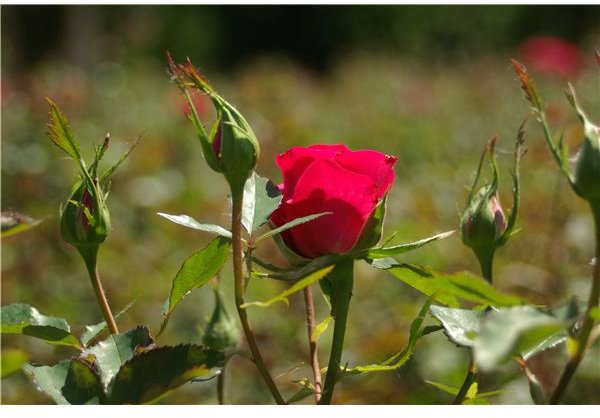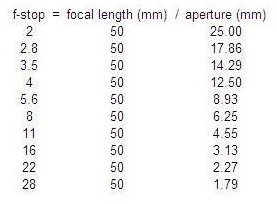Understanding F-Stop and Aperture - What is F-Stop and Aperture and How Do I Use Them for Exposure Control?
The Technical Stuff
F-stop and aperture are by far the most complicated and most confusing aspects to exposure control and composition.
Let’s get the hard stuff out of the way first by going through definitions. F-stop is the ratio of the focal length to the aperture of a lens. Focal length is the distance from your camera’s sensor to the focusing element in your lens and aperture is the size of the hole that allows light in.
The question I get time and again is why there are no units on the f-scale. “My camera is set to f/5.6 but what does that mean?” Because f-stop is a ratio, there are no units associated with it. With the cameras we use, everything is measured in millimeters, but it could as easily be measured in feet or cubits. Regardless, ratios are always displayed without units because when you do the division to arrive at the number, the units cancel out. Ratios are also given in lowest terms.
This should help you understand it all better. The table below assumes you have a 50mm lens and displays the aperture sizes for common f-stops. Notice also that as the f-stop number increases, the size of the aperture decreases. This gets more confusing when you start looking at zoom lenses, which are lenses with variable focal lengths, but the principle is the same.
The Fun, Creative, Useful Stuff
Now that you know all about f-stops and how they work mechanically, let’s look at how they affect your images. The biggest thing f-stop control does is dictate the amount of light getting in your lens. The next biggest thing it does is control depth of field.
Depth of field refers to how much stuff is in focus in the picture, in front of and behind what your primary focus on. See the two images below.


Note that the first one is a nice portrait of roses with a background that is completely out of focus. This was shot at f/5.6, the aperture wide open. The second image is the same picture except with much more of the background visible. This one was shot at f/38, a very small hole. The different size holes allow light rays to bend in different ways, creating this focusing effect. An easy way to remember how this works is to imagine photographing a group of people. At f/4, four people will be in focus. At f/32, 32 people will be in focus. It’s not entirely an accurate statement, but good for remembering how this stuff works when you are shooting.
Tips and Tricks
- Use a small number f-stop (large aperture) for portraits so you get your subject in focus but not the stuff behind him or her.
- Use a large number f-stop (small aperture) to maximize the amount of stuff in focus.
- Sunny 16 Rule. At f/16 and in bright, midday sunlight, your shutter speed should be the inverse of your ISO setting to get a good exposure.
- Photojournalists sometimes say, “f/8 and be there.” F/8 gives you pretty depth of field and getting the picture is more important than getting the perfect picture for photojournalists, who often have to react rather than meticulously setting up shots.
References
Photos by Carl Weaver. Written from author’s own knowledge.
